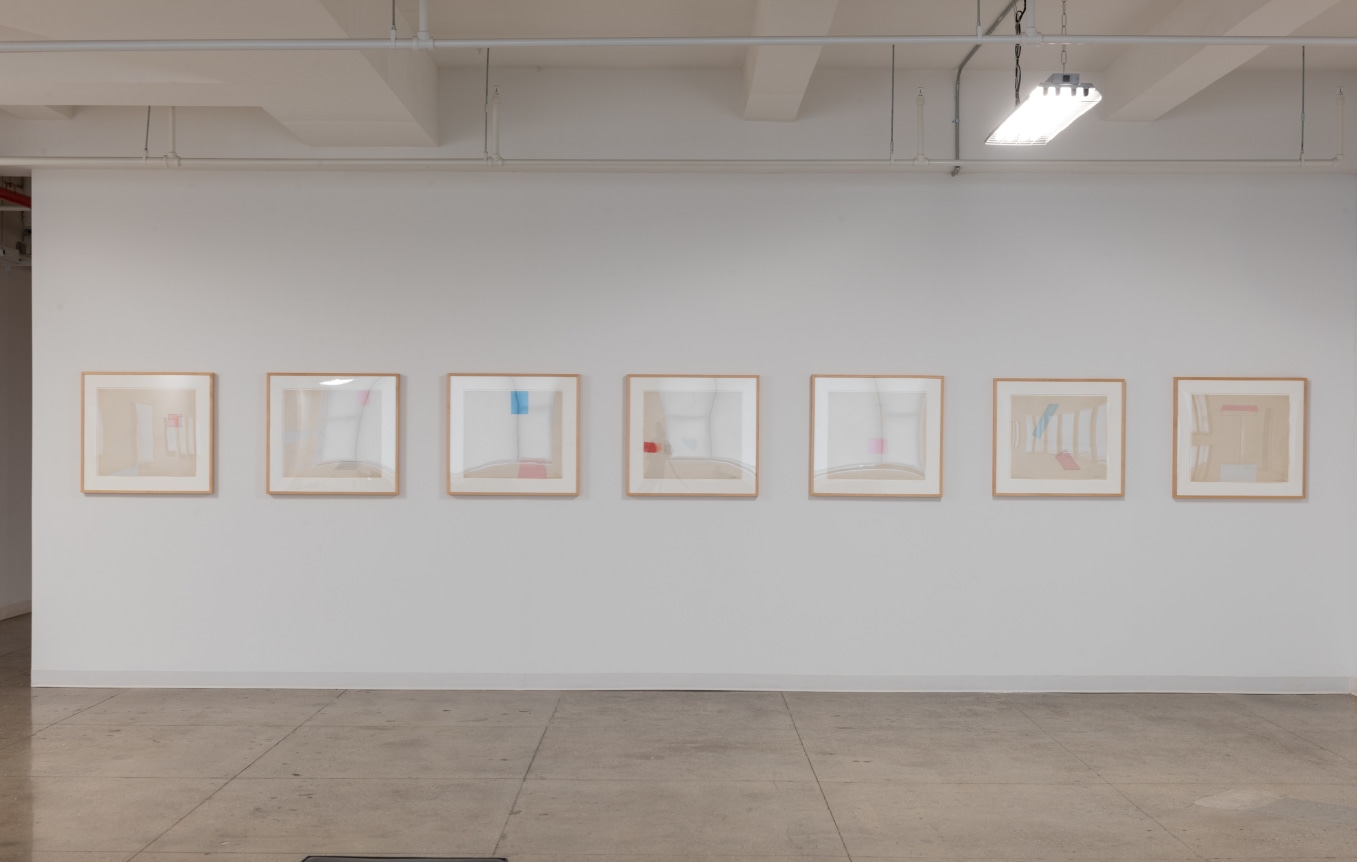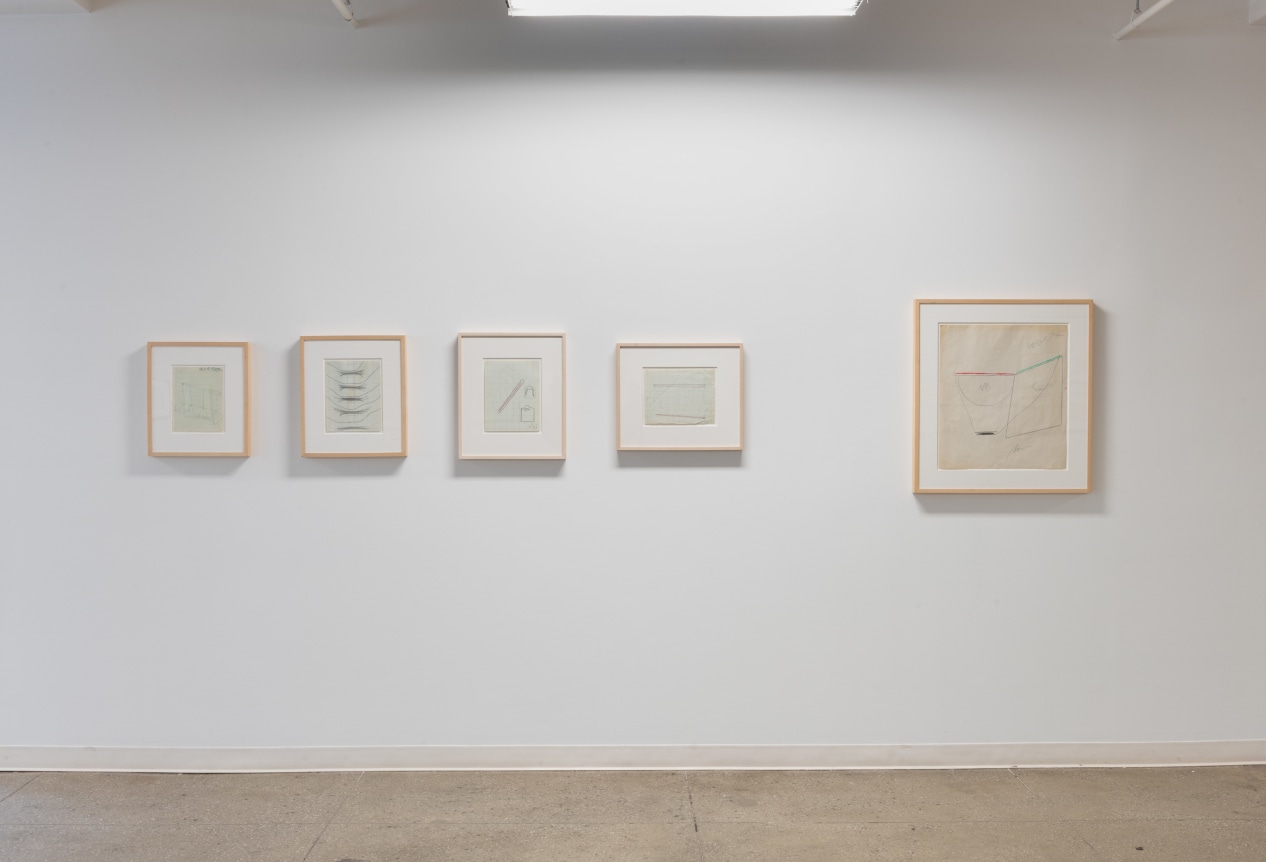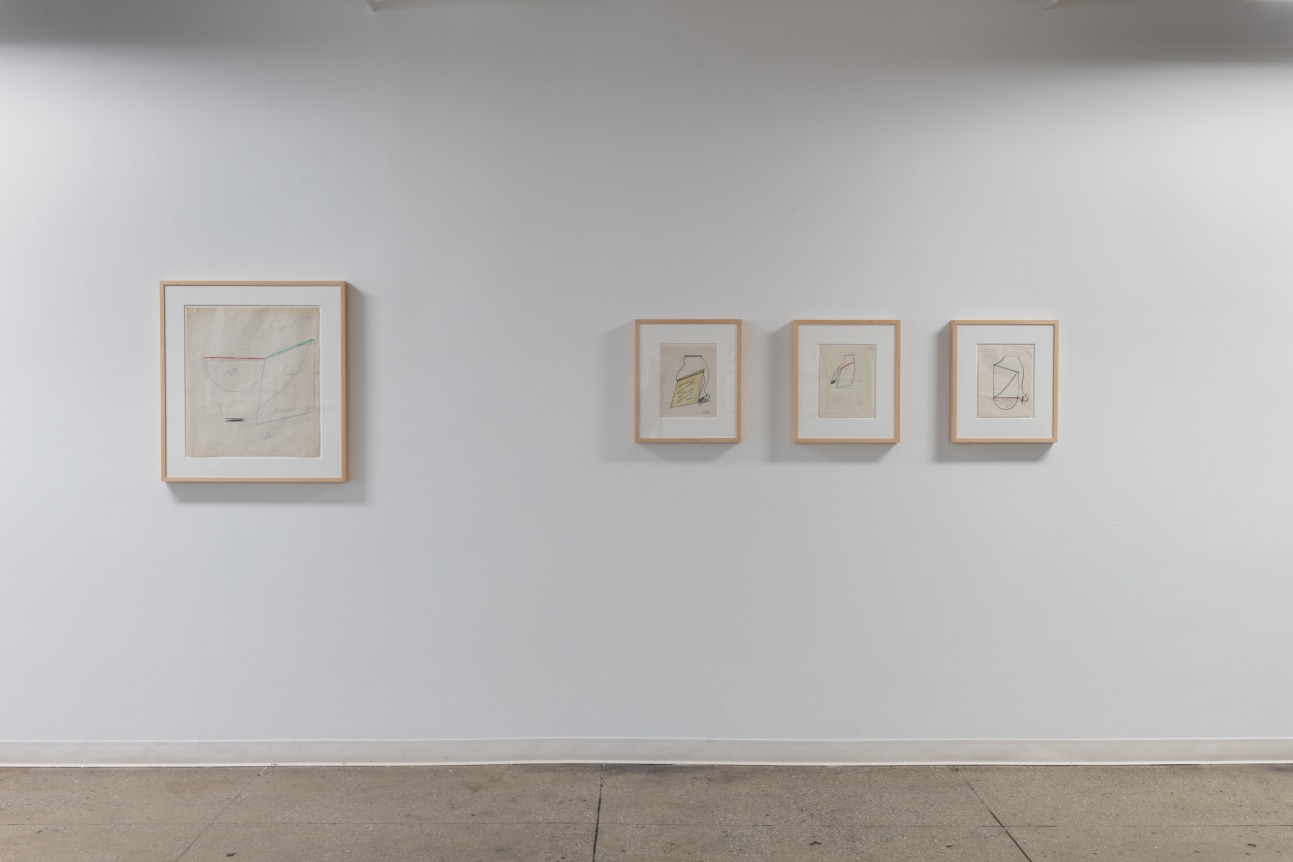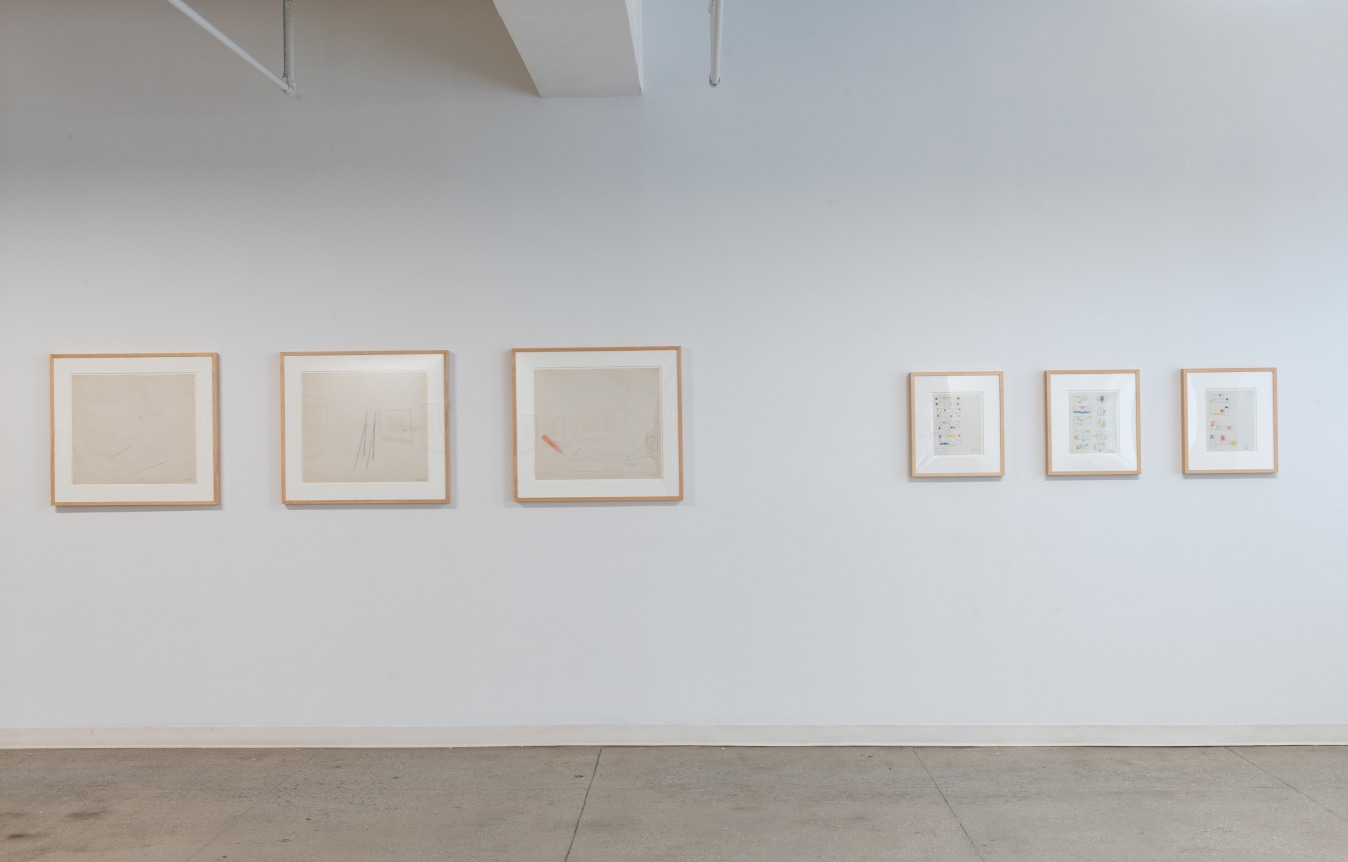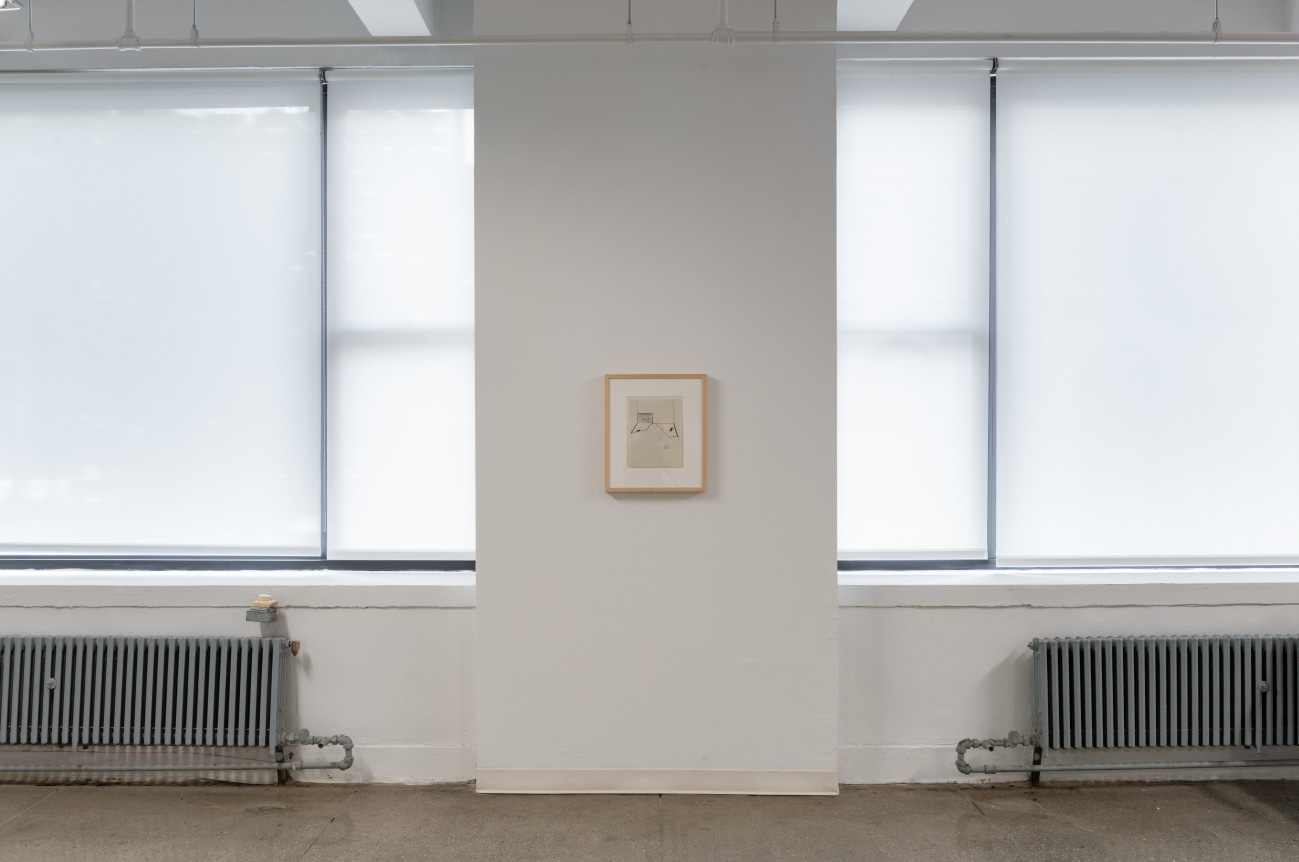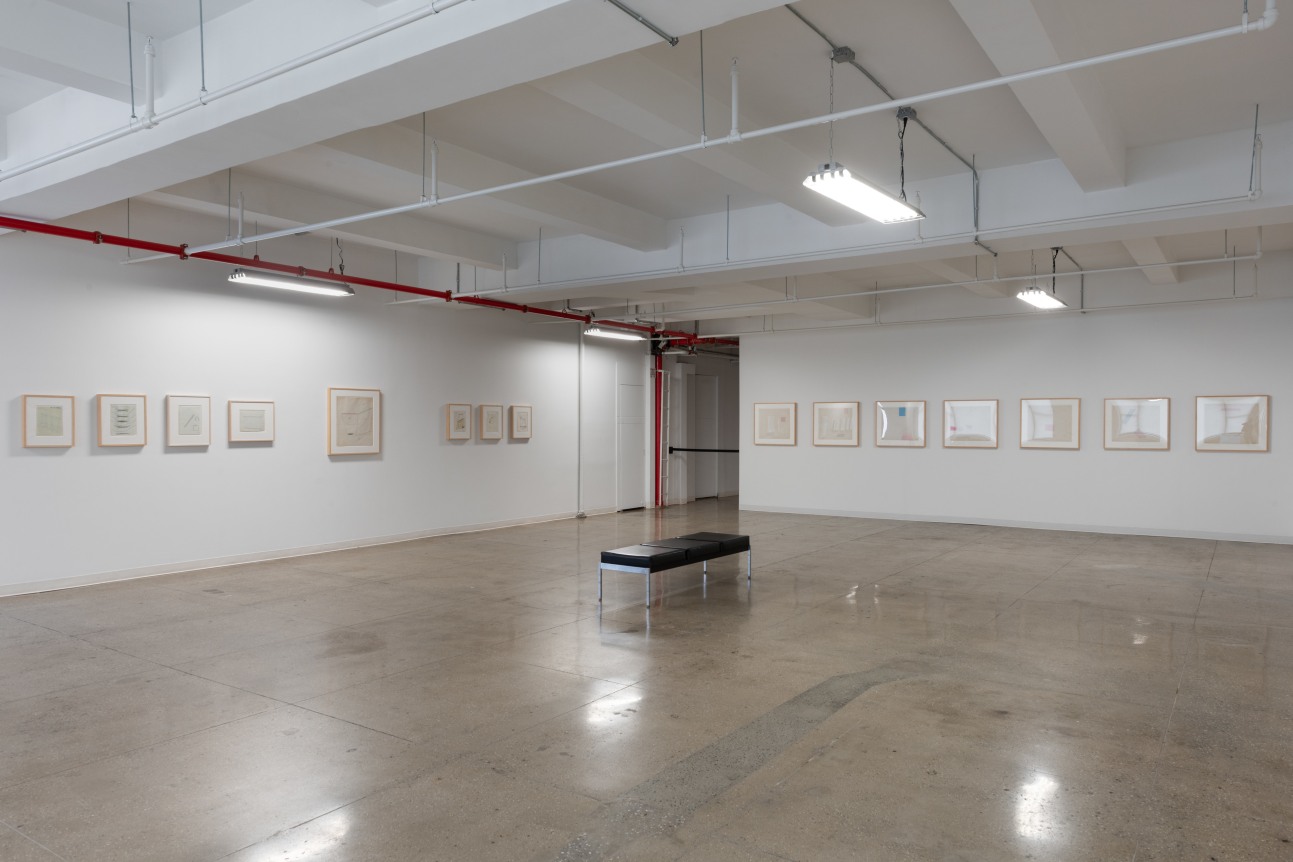Keith Sonnier: Drawings
September 17 – October 25, 2024
24 W 40
Keith Sonnier was a prolific draftsman. Drawing was the foundation of his art, the mainstay of his mercurial and diverse creativity. Keith Sonnier: Drawings focuses on a selection of drawings made between 1966 and 1970, the earliest of which are from the artist’s time as an MFA student at Rutgers University.
Many of the ephemeral and inflatable works in Sonnier’s thesis exhibition are easily recognizable as three-dimensional forms in these preliminary drawings, collectively titled the Early Rutgers and File Series, both from 1966. Unusually formal, precise even in their execution and composition, they are remarkable in that they are among only a few of his drawings to utilize perspective.
Sonnier alternated between significantly different series of work which is reflected in his drawings. Freehand line drawings articulated the form and the materials such as transformers, wires, silver tipped light bulbs in the earliest light works like Neon Wrapping Lightbulbs, circa 1967. The organic loops and undulating lines in the drawings, which are made with markers on plain paper or ballpoint pen on red graph notepads, were translated into flexible copper (with dimensions similar to those of neon tubes) thus making perfect templates, providing the sculptor with full-size maquettes, and the neon fabricator with three-dimensional “drawings in space” to work from.
Plain, loose-leaf sketch pads, or notebooks with graph paper, provided a framework for the straight lines, circles and squares seen in Sonnier’s glass and neon work that began in his Mulberry Street Studio such as Ba-O-Ba and Early Glass and Neon. The free-form neon loops and low-tech materials of the Neon Wrapping Lightbulbs series were replaced by the rigid geometry of the Ba-O-Ba’s, 1969-2019. This major series of work may have begun with thumbnail sketches but over the course of fifty years evolved in both scale and concept to include sculptures and architectural installations whose symmetry and proportions were inspired by the concept of the golden ratio and sacred geometry.
During the early 70’s, Sonnier switched gears completely, moving away from sculpture and instead immersing himself in the possibilities offered by the latest technology. This investigation took his work in new directions for almost a decade. The drawings that bring this exhibition to a close relate specifically to the experimental film and video work documented in the Castelli Sonnabend Videotapes and Films, 1974. Sketches and drawings such as the Electrical Cut Studies, 1970, focus on the positioning of video equipment and the manipulation of video editing techniques.
Keith Sonnier was born in 1941 in Mamou, Louisiana. He had his first solo show at Castelli Gallery in 1970. He died in Southampton, New York in 2020. This November, Dia will open Keith Sonnier, a long-term presentation which includes works from the 60s and 70s.

